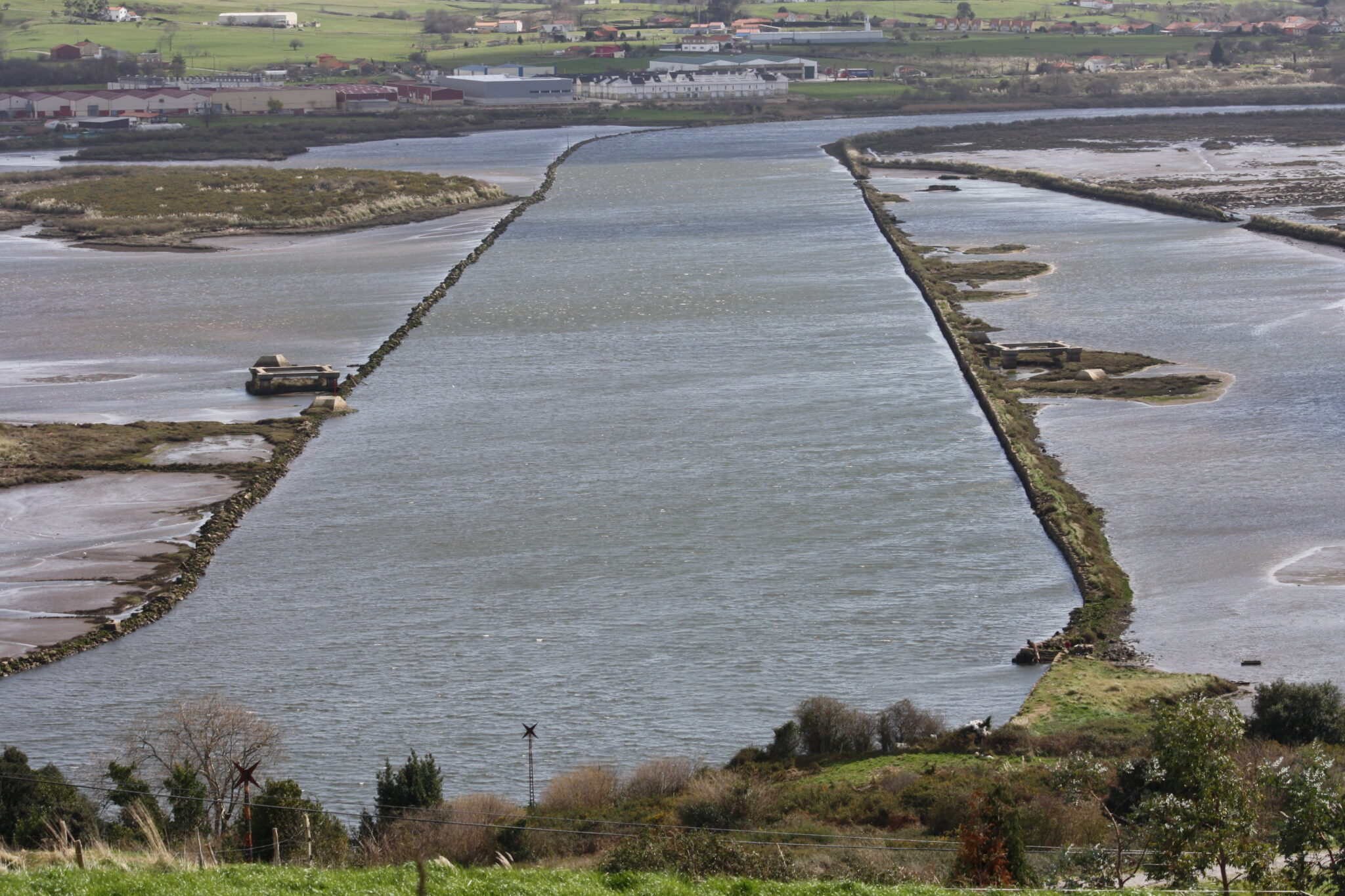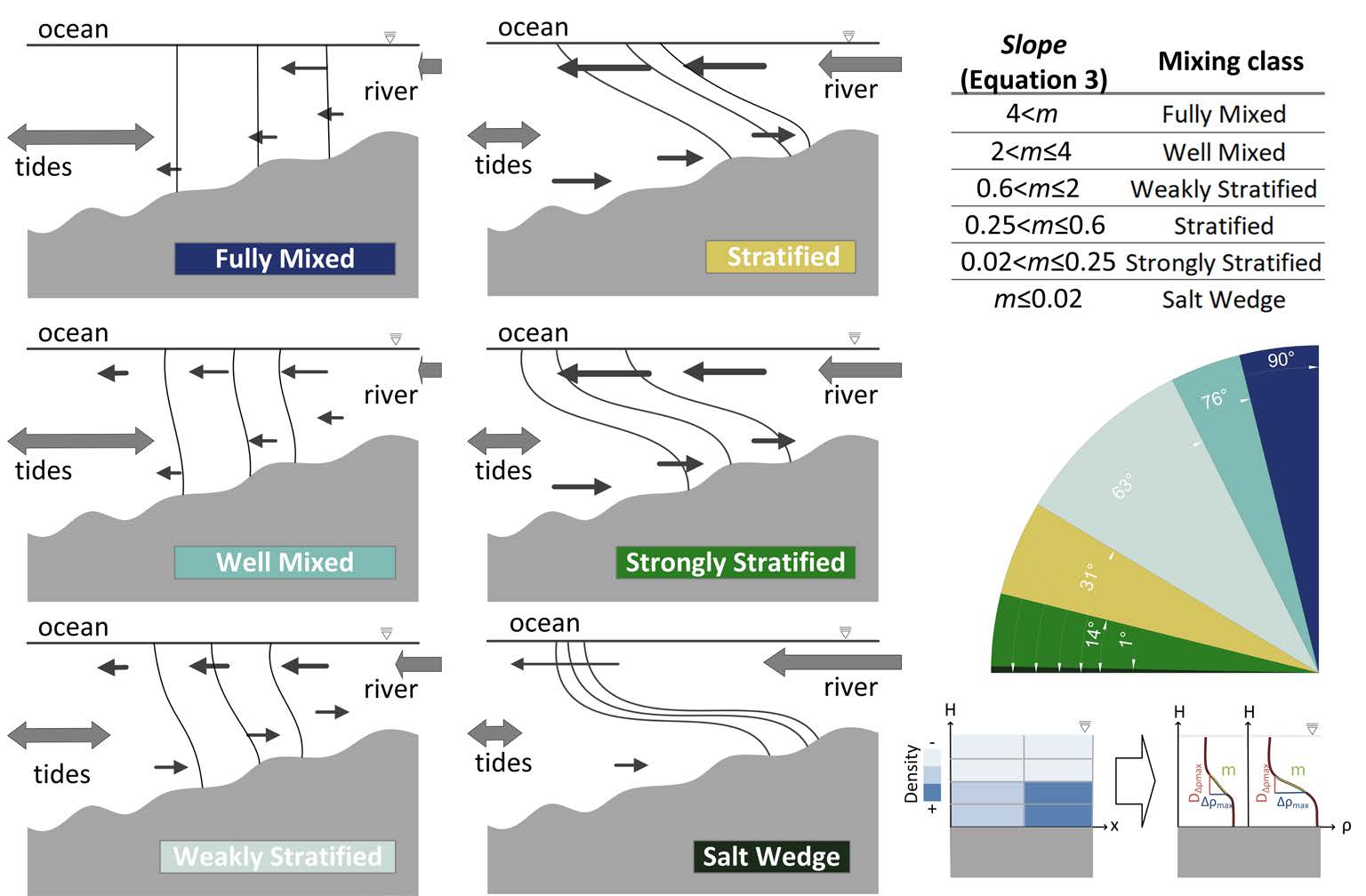NEWS
IHCantabria proposes a new estuarine classification to optimize the management of these ecosystems, taking into account the effects of climate change.

This new classification considers the density of the water column to record variations in salinity and temperature, allowing for a more precise evaluation of alterations in estuarine hydrodynamics because of climate change. The estuary of Suances was chosen as a pilot case.
Central channel of the Suances estuary and zones with floodable moors (lateral areas).
A recent scientific study published in the journal Water, by researchers from the Institute of Environmental Hydraulics of the University of Cantabria (IHCantabria, by its acronym in Spanish), sheds light on a new classification of the vertical structure in estuaries, as well as offering valuable perspectives for the sustainable management of these ecosystems.
The problem that motivated this research lies in the complexity of estuaries, where variability in salinity -due to differences in topography and other factors- can profoundly affect internal estuarine currents, giving rise to three-dimensional stratification and mixing phenomena. This phenomenon is very relevant in narrow and shallow estuaries with large intertidal areas, which represent approximately 75% of the estuarine surface worldwide. The lack of a precise methodology for classifying mixing classes in these estuaries has been a major challenge for researchers and environmental managers.
The main objective of this research has been to develop a new estuarine classification based on the slope of the density profiles and their relationship with the Potential Energy Anomaly (PEA). PEA is a widely used parameter in mixing and stratification studies; however, prior to this research, no method had been proposed to establish PEA reference thresholds to classify estuaries into different vertical mixing classes.
“In a modern Tower of Babel, the terminology, use and estimation of mixture classes have become increasingly mired in confusion, despite valuable efforts to achieve a more robust theoretical framework,” says Javier García Alba, one of the co-authors of the article published in Waters. As a result of the research described in this article, a methodology is provided that homogenizes and globalizes the terminology used to define estuarine mixing classes, based on an easily interpretable physical variable: water density. This facilitates the quantification of mixing and stratification classes in estuaries, which allows for better management of these ecosystems.
This research is part of the doctoral thesis being developed by the student of the University of Cantabria, Jagoba Lupiola, which is directed by Dr. Javier F. Bárcena and Professor Andrés García, with the collaboration of Dr. Javier García-Alba. All of them are co-authors of the article recently published in the journal Waters and of another article published earlier in the journal Frontiers in Marine Science.They are members of the Oceanography, Estuaries and Water Quality Group of IHCantabria.
The applicability of this methodology was demonstrated in the Suances estuary, as a pilot case. The results indicate that in the current climate situation (2020 scenario), areas classified as well-mixed, which occupy more than half of the area, predominate. In addition, data is provided that allows predicting how this kind of vertical mixing will grow in the projected scenarios up to 20%, by 2050, suggesting further implications for the management of these ecosystems in the context of climate change.
In terms of impact, this research has a significant scientific-technological, environmental and socioeconomic scope. The methodology developed is scalable and can be applied in estuaries around the world, which would contribute to better governance and the construction of a common classification system for transitional aquatic ecosystems. This, in turn, will allow for more effective optimization of urban and industrial wastewater treatment infrastructures, promoting compliance with environmental regulations and improving the economics of estuarine ecosystem services. In addition, this research supports the Sustainable Development Goals (SDGs) of the 2030 agenda by addressing issues related to sustainable water management and biodiversity. Therefore, this study represents an important step towards the understanding and effective management of estuarine ecosystems, which play a fundamental role in the health of aquatic systems and the sustainability of the planet. The researchers involved in this project hope that their findings will contribute significantly to the conservation and proper management of these valuable natural resources.
To access the full article, visit: https://doi.org/10.3390/w15183294

Area of the mouth of the Suances estuary.

Proposed classification of estuaries according to their vertical structures based on the slopes of the density profile and its graphic representation.


